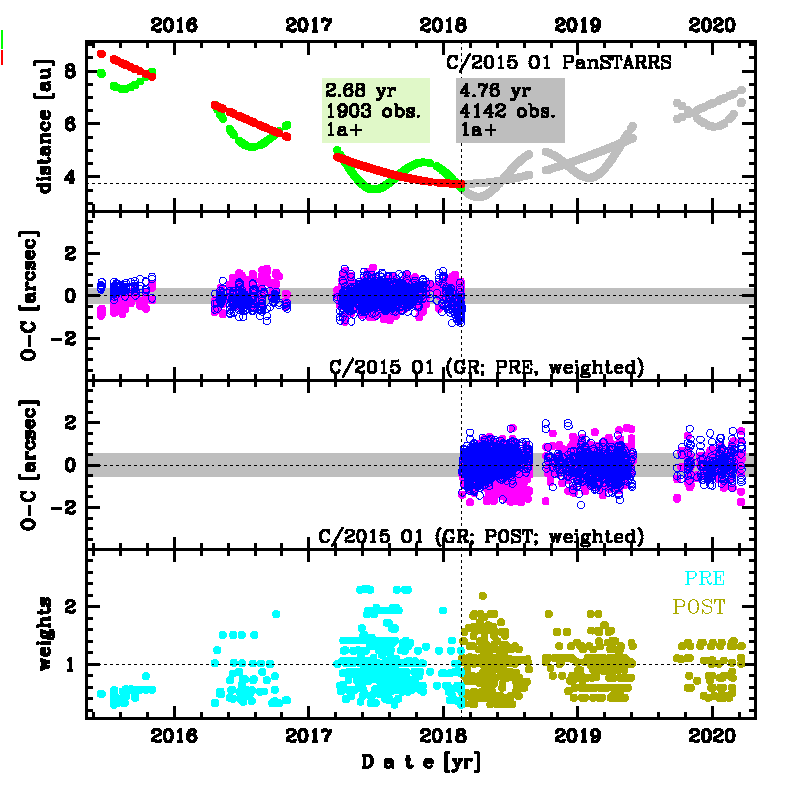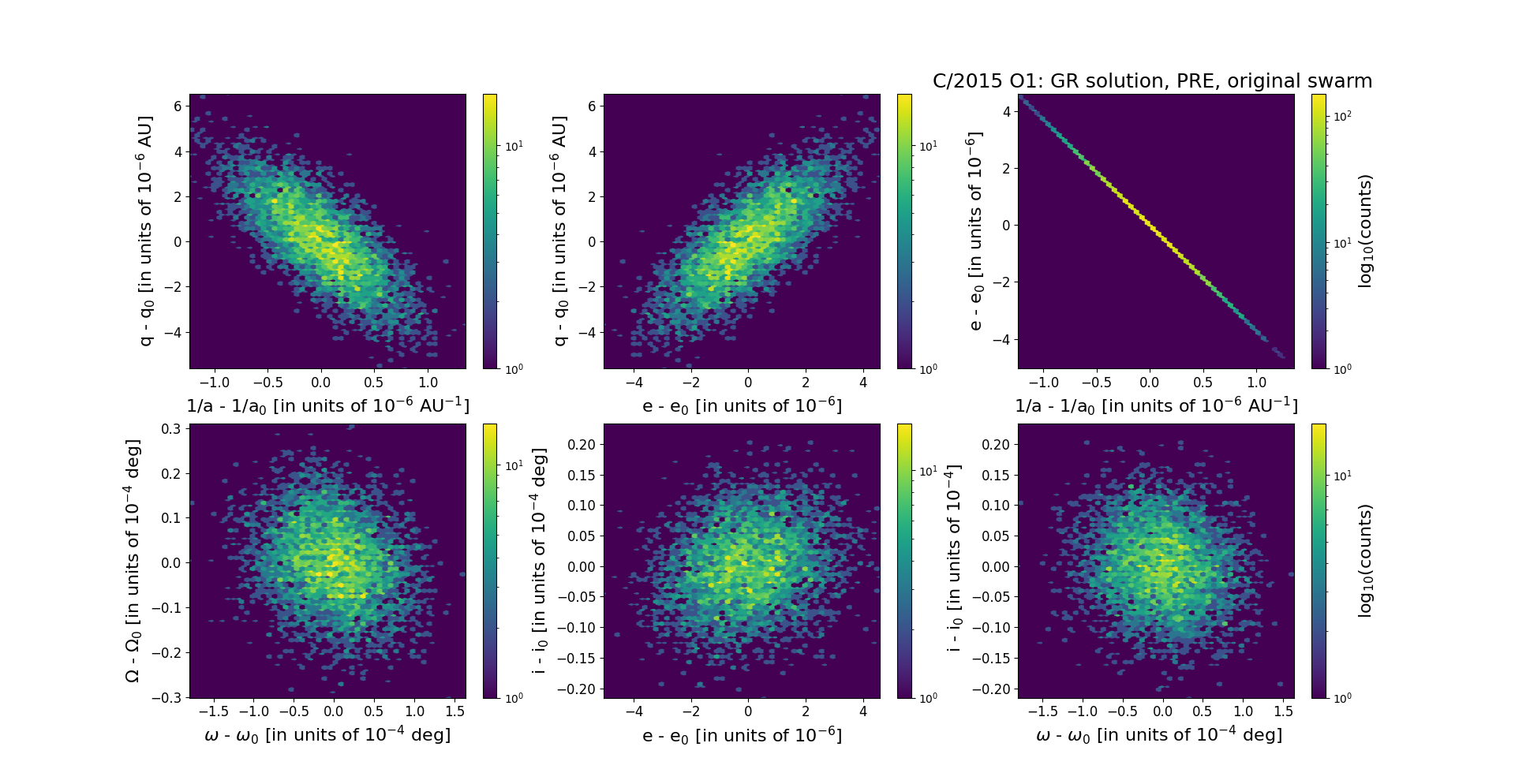C/2015 O1 PANSTARRS
more info
Comet C/2015 O1 was discovered on 19 July 2015 with Pan-STARRS 1 telescope (Haleakala), that is about months after its perihelion passage.
Some prediscovery images of this comet were found: taken on 15 and 17 of June 2015 by Space Surveillance Telescope (Atom Site).
Solutions given here are based on data spanning over 4.76 yr in a range of heliocentric distances: 8.65 au – 3.730 au (perihelion) – 7.28 au.
NG orbits using full data-arc as well as independently using pre-perihelion and post-perihelion data are determinable.
See also Królikowska and Dones 2023.
| solution description | ||
|---|---|---|
| number of observations | 1903 | |
| data interval | 2015 06 11 – 2018 02 18 | |
| data arc selection | data generally limited to pre-perihelion (PRE) | |
| range of heliocentric distances | 8.65 au – 3.73au | |
| detectability of NG effects in the comet's motion | comet with NG effects strongly manifested in positional data fitting | |
| type of model of motion | GR - gravitational orbit | |
| data weighting | YES | |
| number of residuals | 3783 | |
| RMS [arcseconds] | 0.36 | |
| orbit quality class | 1a+ | |
| orbital elements (barycentric ecliptic J2000) | ||
|---|---|---|
| Epoch | 1714 07 15 | |
| perihelion date | 2018 02 18.05396304 | ± 0.00023618 |
| perihelion distance [au] | 3.72106890 | ± 0.00000179 |
| eccentricity | 0.99979435 | ± 0.00000149 |
| argument of perihelion [°] | 89.695285 | ± 0.000048 |
| ascending node [°] | 299.871800 | ± 0.000009 |
| inclination [°] | 127.176649 | ± 0.000006 |
| reciprocal semi-major axis [10-6 au-1] | 55.27 | ± 0.40 |
| file containing 5001 VCs swarm |
|---|
| 2015o1pa.bmi |

Upper panel: Time distribution of positional observations with corresponding heliocentric (red curve) and geocentric (green curve) distance at which they were taken. The horizontal dotted line shows the perihelion distance for a given comet whereas vertical dotted line — the moment of perihelion passage.
Middle panel(s): O-C diagram for a given solution (sometimes in comparison to another solution available in CODE), where residuals in right ascension are shown using magenta dots and in declination by blue open circles.
Lowest panel: Relative weights for a given data set(s).
Middle panel(s): O-C diagram for a given solution (sometimes in comparison to another solution available in CODE), where residuals in right ascension are shown using magenta dots and in declination by blue open circles.
Lowest panel: Relative weights for a given data set(s).
